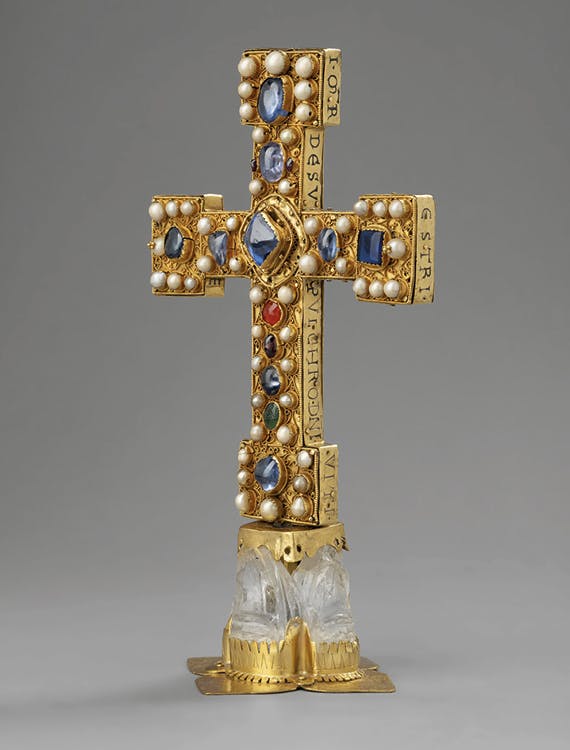
Medieval Treasures
- Magazine Article
- Exhibitions
Rare ecclesiastical masterpieces from Münster Catherdral

Reliquary Cross c. 1050–1100. Engraved gem: AD 1–100; rock crystal mounting: 800s–900s; setting: late 1200s. Western Germany; engraved gem: Abbasid. Wood core, gold, 14 gemstones, 50 pearls, copper, and rock crystal; overall: h. 22.6 cm; cross: 17.2 x 13 cm. Hohes Domkapitel der Kathedralkirche St. Paulus, Münster. Photo: Stephan Kube, Greven, Germany
Saint Paul’s Cathedral in Münster preserves one of the most outstanding medieval church treasuries in Europe, which looks back on a tradition of more than 1,200 years. The objects were acquired and mostly made for the church and have been kept there ever since. The building of the new treasury in Münster offers the unique opportunity to exhibit a selection of masterpieces for a limited time at the Cleveland Museum of Art. They give insight into treasure art of the Middle Ages and the diverse forms of reliquaries, which were part of every church at that time. The precious objects bring us closer to the piety and thinking of an age seemingly long gone, but they also give us direct insight into the trade contacts of the time, ranging from Paris, as a production center, to Africa, the source of some materials. The exhibition also sheds new light on the CMA’s collection, which, with the objects of the Guelph treasure, already possesses famous holdings of art from medieval Germany.
One of the oldest surviving objects from the Münster treasure is a reliquary cross made in the second half of the 1000s. Its front side displays a rare example of a crux gemmata, a cross densely decorated with gemstones and pearls. Near the bottom of the long beam of the cross is an ancient emerald with the engraved image of the Roman goddess Minerva. The use of antique precious stones is typical for medieval treasure objects. According to the inscription running along the narrow sides of the cross, it contains important relics of the Lord, such as a piece of the True Cross and relics of the Mother of God and of additional saints. Around the end of the 1200s, the reliquary cross was remodeled into an altar cross mounted onto a rock crystal foot with a gilded-copper setting. The crystal flask from the 800s or 900s is one of numerous examples from Abbasid Egypt that were reused on Christian treasure objects.

The other works in the exhibition date from the 1000s to the 1500s. The bust of Saint Paul, for example, from the third quarter of the 1000s, holds relics of the cathedral’s main patron; it is considered the oldest preserved head reliquary in the Christian West. Other objects date to the decades around 1400, when Münster experienced a cultural heyday, while the figure of Saint Agnes was created around 1520, a few years before the Reformation put an end to the flourishing of ecclesiastical art in Münster.

The treasure objects from Münster can draw our attention to a not-so-distant history. Today, reliquaries and relics continue to attract many pilgrims, especially in Europe, and are sometimes displayed in churches or during processions on special holidays.
